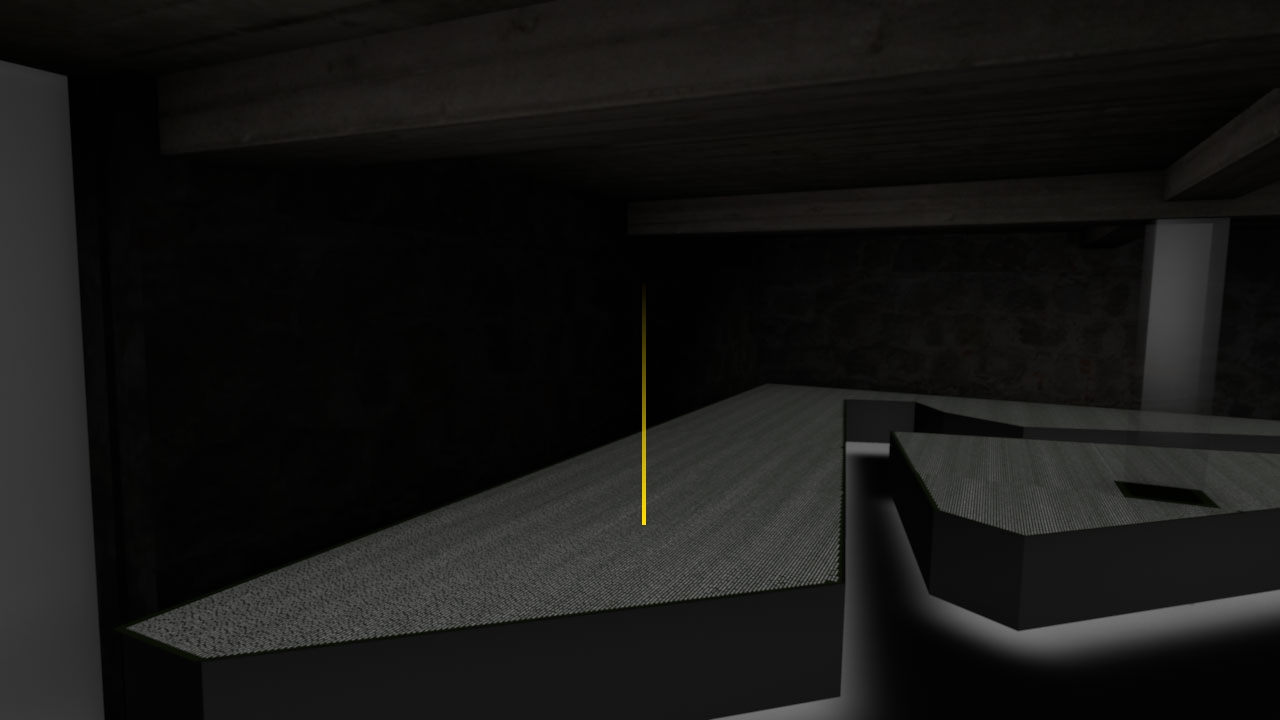Marcell Klang 1876 - 1942
Born 31.5.1876 in Wien
Died 25.6.1942 in Mauthausen
Biography
Marcell Klang was the editor of a work that is weighty in every respect, with 1,126 pages and a second-hand price tag today of the not inconsiderable sum of 100 to 250 euros. However, the main weight of the work lies in the fact that it remains a reference volume without successor. In 1936 Marcell Klang undertook the attempt to present The Intellectual Elite of Austria in a biographical dictionary. The work was published in an incredibly modern-looking edition by the Viennese publisher C. Barth. The book did not use a blackletter typeface, or Fraktur, propagated by the National Socialists since 1933 as the ‘German font’, but an Antiqua typeface. In 1941 the National Socialists ceased to use Fraktur as the font of National Socialism and made Antiqua the typeface that was to make ‘German a world language’. The characters of ‘Schwabacher’ (Gothic script), whose letters were similar to Fraktur, were classified by the National Socialists in their writing reform of 1941 as ‘Jew letters’ whose ‘use was to be discontinued’.
Marcell Klang paid tribute to those who had given him permission to do so – including the publication of their addresses and telephone numbers – through strikingly varied and detailed commendations: politicians and civil servants, businessmen and artists alike. It should be noted that it only contains political representatives of the Ständestaat (the Christian-Social one-party dictatorship under Federal Chancellor Engelbert Dollfuß from 4 March 1933, who was murdered on 25 July 1925 in his offices, and who was succeeded as Chancellor from 29 July 1934 to 11 March 1938 by Kurt Schuschnigg) and not those of the (persecuted and banned) opposition. Which artists were not included for what reasons – whether they did not want to be included or were not asked by Klang – is difficult to determine on the basis of the nevertheless varied selection. In his foreword, Marcell Klang describes the selection in this edition as merely the first step. In any case, it is missing authors, some respected in the Ständestaat, such as Karl Kraus (died in 1936), Elias Canetti (emigration to Switzerland in 1938), Hans Weigel (emigration to Switzerland in 1938), Peter Hammerschlag (disappeared on a transport between Theresienstadt and Auschwitz in 1942), Jura Soyfer (died of typhus in Buchenwald concentration camp in 1939), Stefan Zweig (emigration to London in 1934), Joseph Roth (emigration to Paris in 1933), Friedrich Torberg (emigration to Switzerland in 1938), Hermann Broch (emigration to the USA in 1938), Leo Perutz (emigration to Israel in 1938), Alfred Polgar (emigration to Paris in 1938), Gina Kaus (emigration to France in 1938), Franz Werfel (emigration to France in 1938), Bertold Viertel (emigration to France in 1938), Theodor Kramer (emigration to London in 1939), Ödön von Horvath (emigration to Paris in 1938), Hermynia zur Mühlen (emigration to England in 1939). However, at this time many of them were not living in Austria or were Austrians born in the Habsburg Monarchy.
Among the artists, scientists and authors included in the lexicon and still known today are: Rudolf Beer, director of the Volkstheater (suicide in May 1938), Sigmund Freud, founder of psychoanalysis (emigration to London in 1938 after paying the exit tax known as the Reichsfluchtsteuer), the author Egon Friedell (suicide in March 1938), the comedian Fritz Grünbaum (died in Dachau in 1941), the architect Clemens Holzmeister (emigration to Istanbul in 1938), the author Alma Johanna Koenig (murdered in the Maly Trostinec extermination camp in 1942), the composer and Oscar-winner Erich Wolfgang Korngold (emigration to the USA in 1938), the author Jeremias Kreutz (banned from publishing in Germany in 1933 and in Austria in 1938, several months’ imprisonment in 1944), the author Robert Musil (emigration to Switzerland in 1938) and the sculptor Fritz Wotruba (emigration to Switzerland in 1939).
This first edition, which is all there ever was and which portrays the leading figures in the years following the seizure of power in Germany by the National Socialists and the establishment of the Ständestaat in Austria, contains a total of 1,000 tributes and portraits and no index of those to be found in the volume. Klang did not put himself in the spotlight and did not write his own tribute. There is no information to be found in the book on its editor Marcell Klang. His name appears just once in public and general reference sources, namely in the catalogue of the Austrian National Library as the editor of the Viennese weekly paper Die Sonne between 1916 and 1918.
Marcell Klang was born on 31 May 1876 in Vienna. At the age of 66, on 25 June 1942, shortly after his arrival at the Mauthausen concentration camp, he was ‘shot on the run’ at 8am, as one of the stock reasons recorded for the murder of prisoners in concentration camps stated. The reason given for his arrest on 10 February 1942 by the Gestapo was his ‘unauthorised collecting activity’ and his ‘demand for financial assistance’: ‘The Jew Marcell Israel Klang [was] arrested because he had been demanding financial assistance from Aryans since 1941. To date he has received RM 5 to 10 from around 50 people, including 14 Party members, sometimes monthly. [By way of comparison: 10 RM a month had to be paid in fees for prisoners in Dachau e.g. by the family of Gerhard Bronner in 1938 for the imprisonment of the family father and a son[1] – G.R.] During his audiences [with the donors] he repeatedly criticised the measures taken by the state to solve the Jewish question [the forced marking of the Jewish population with the ‘yellow star’ ordered by the Nazis in 1941 and the ‘final solution’ being called for– G.R.] while also generally displaying his hostile attitude towards the National Socialist state.’
No such memorial for Marcell Klang exists as that erected by him for over 1,000 others given a portrait by him in his Handbuch der Führenden in Kultur und Wirtschaft (Handbook of the Leaders of Culture and Business), but at least he has found a permanent place for his lexicon in the library of the Vienna Literaturhaus. The following remark is from a Viennese antiques dealer, who offered it for sale and from whom, in 2005, around 70 years after publication, it was purchased:
‘Excellent edition; rare, comprehensive and quite interesting biographical dictionary’, and which, it should be added, could only come about through the patient, immense and systematic efforts of its author over many years.
The publishing house C. Barth, who published the book in 1936, was ‘Aryanised’ in 1938 since it was in ‘Jewish’ ownership. The owner, Béla Hess, was able to emigrate to England following the forced sale of his publishing house and printing press.
Marcell Klang dedicated one of the portraits in the lexicon to his brother, the Austrian legal scholar Heinrich Klang, who was one year his senior. He sought to pay tribute to him, as well as to his six-volume Commentary on the General Civil Code, completed over eight years of work between 1927 and 1935. Heinrich Klang survived Theresienstadt, where the National Socialists used him as a judge to settle inheritance and guardianship matters in the ghetto court from 25 September 1942 to 8 May 1945. Immediately after the end of the war he was appointed a High Court judge by the Allies. Even the (left-wing) Arbeiter Zeitung newspaper honoured him on the occasion of his death on 22 February 1954 as ‘the last liberal in the law so to speak’, although he was ‘no Socialist, but rather an opponent of socialist attitudes’.
Gerhard Ruiss
Translation into English: Joanna White
[1] Another comparison: ‘On the second [Christmas] bank holiday [in 1939] we were able buy some mouldy jellied meat in the canteen that wasn’t good enough for the SS any more. For one kilo I paid twelve marks […] Luckily my mother had sent me a small sum of money […]’. (Erwin Gostner, member of the [Austrian] Fatherland Front and prisoner at Mauthausen and Gusen concentration camps from 1939 to 1941, in his self-published work 1000 Tage im KZ, printed in 1945 by the Wagnerschen Univ.-Buchdruckerei in Innsbruck).
Location In room

